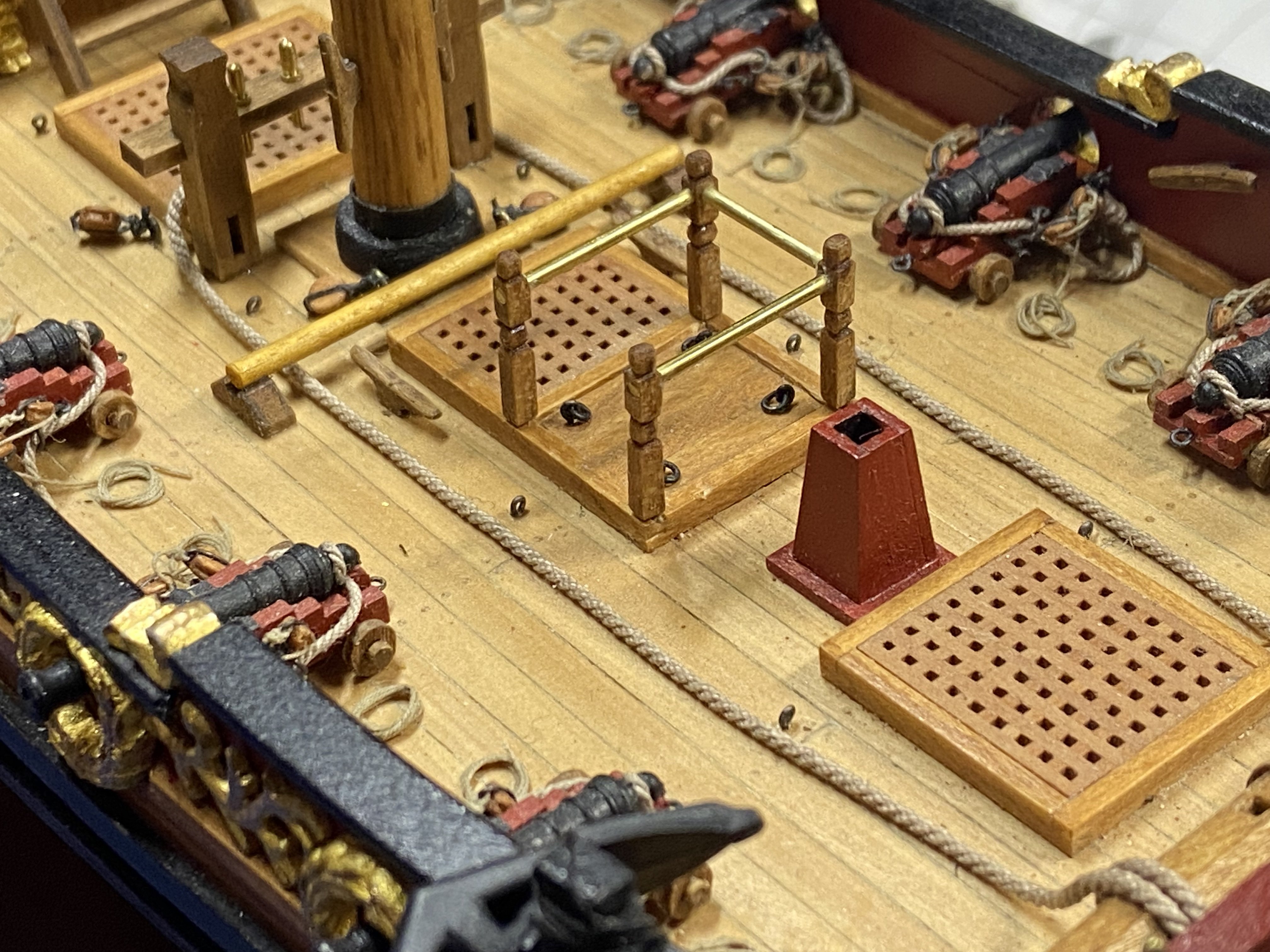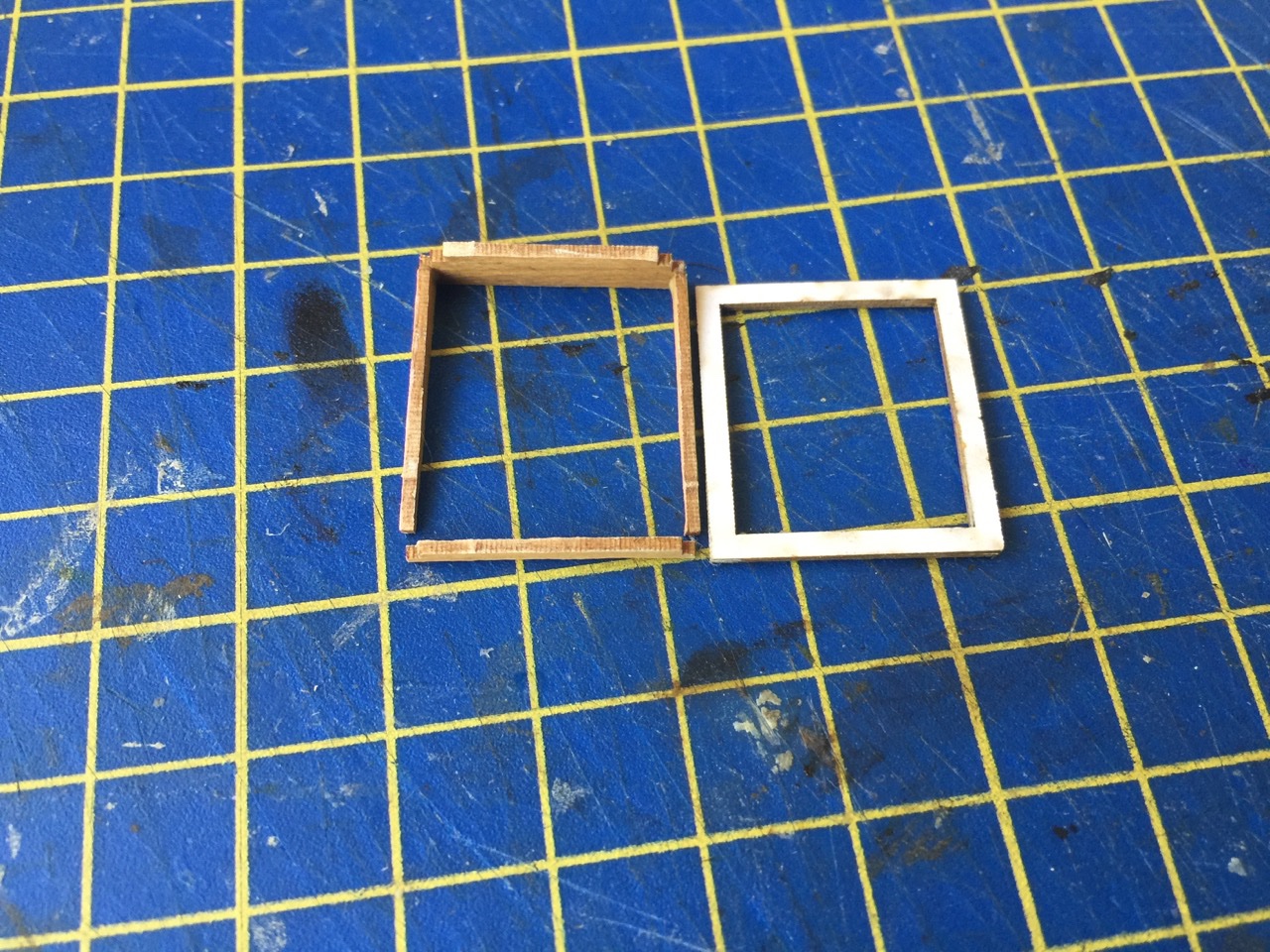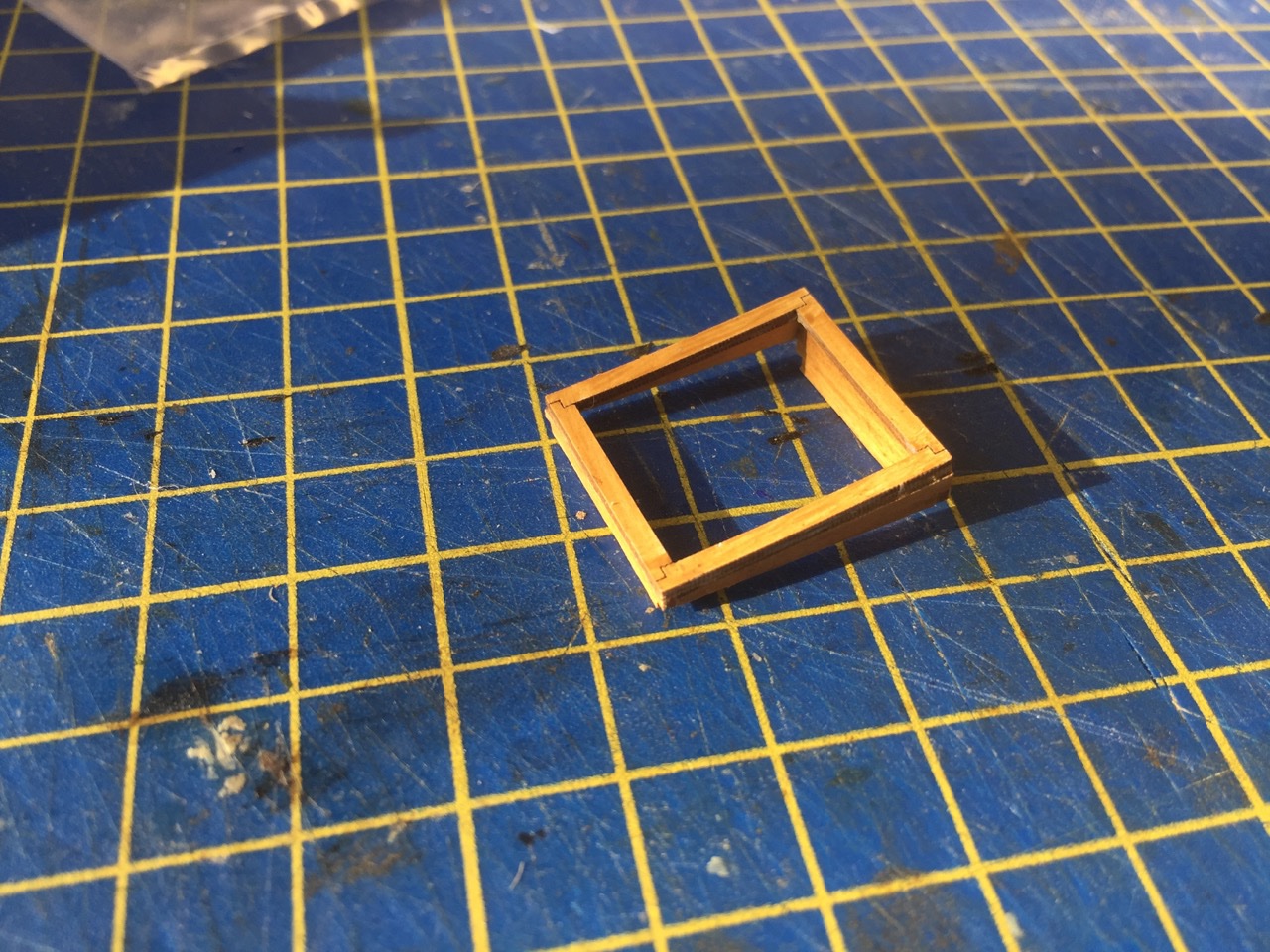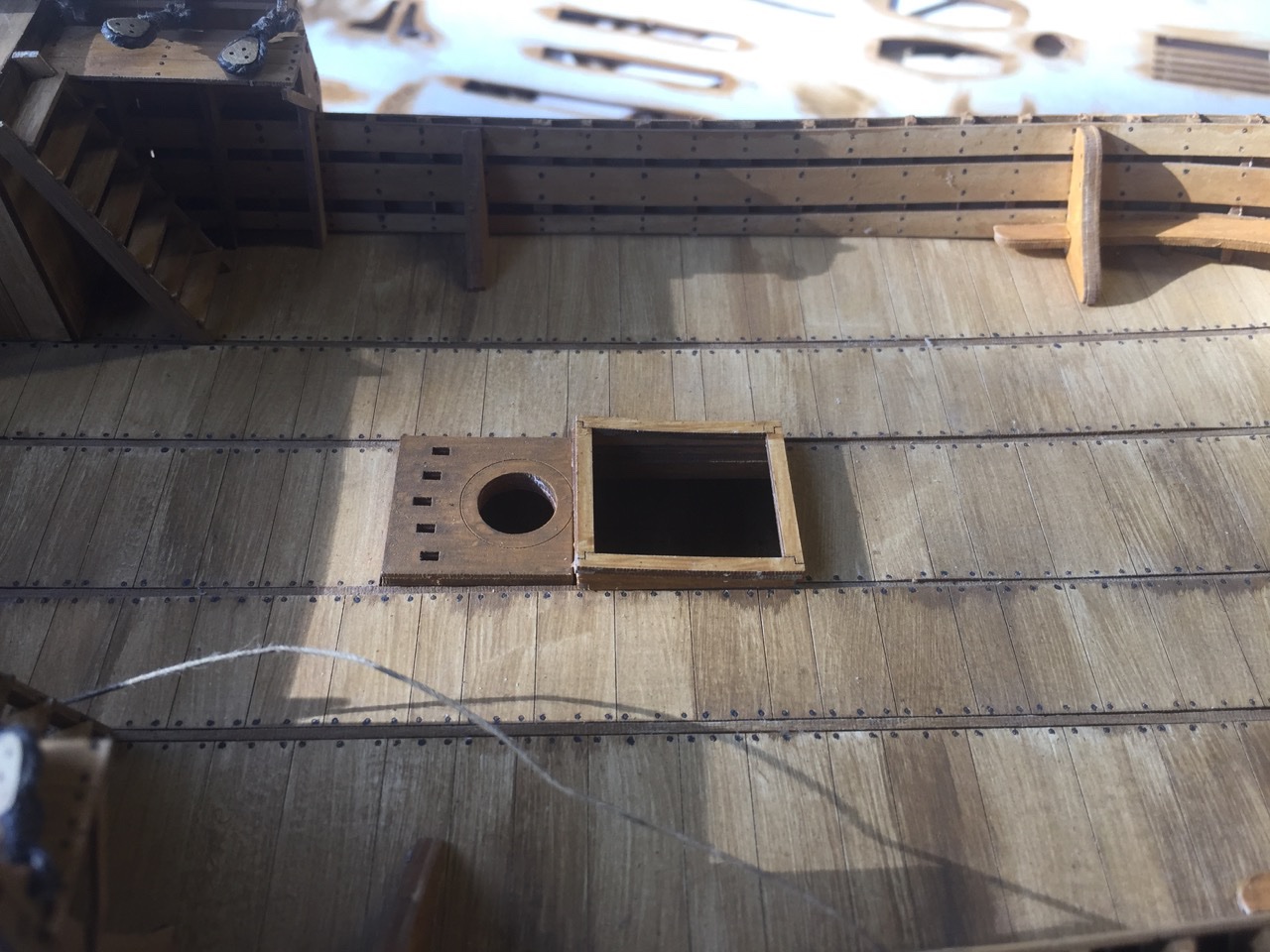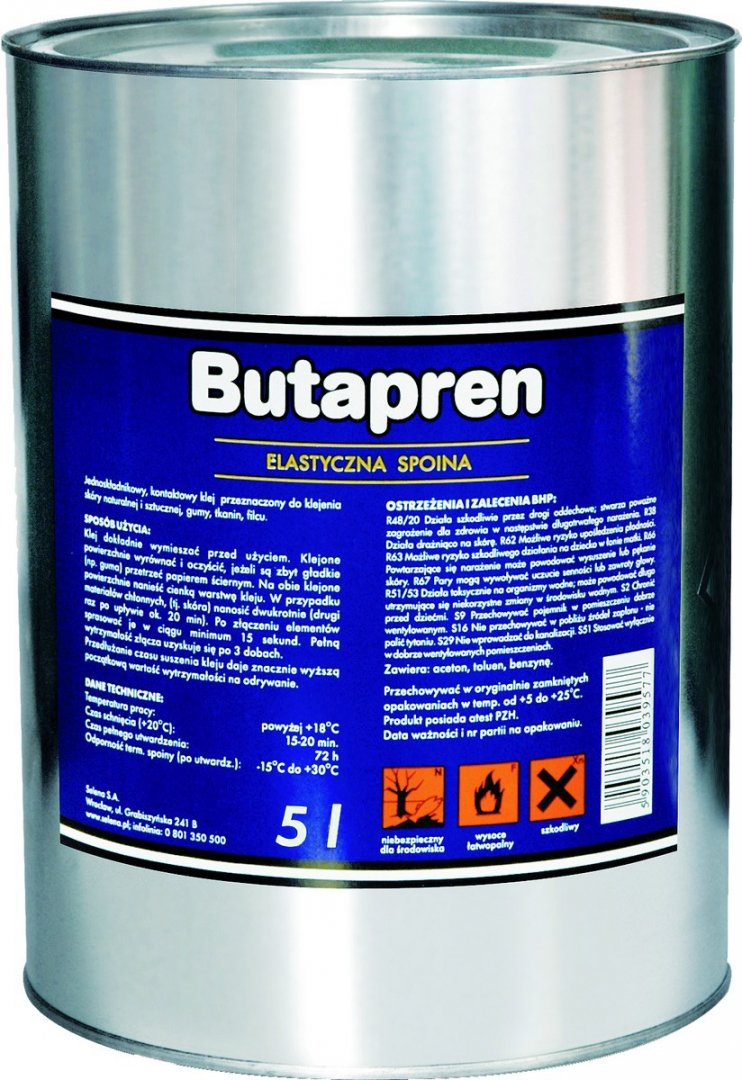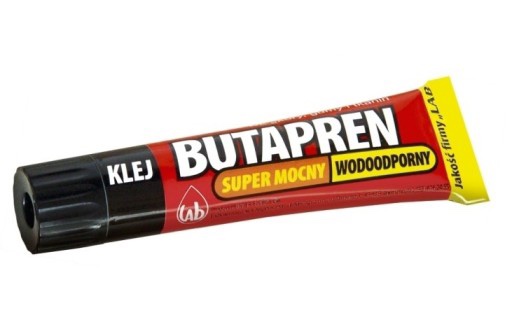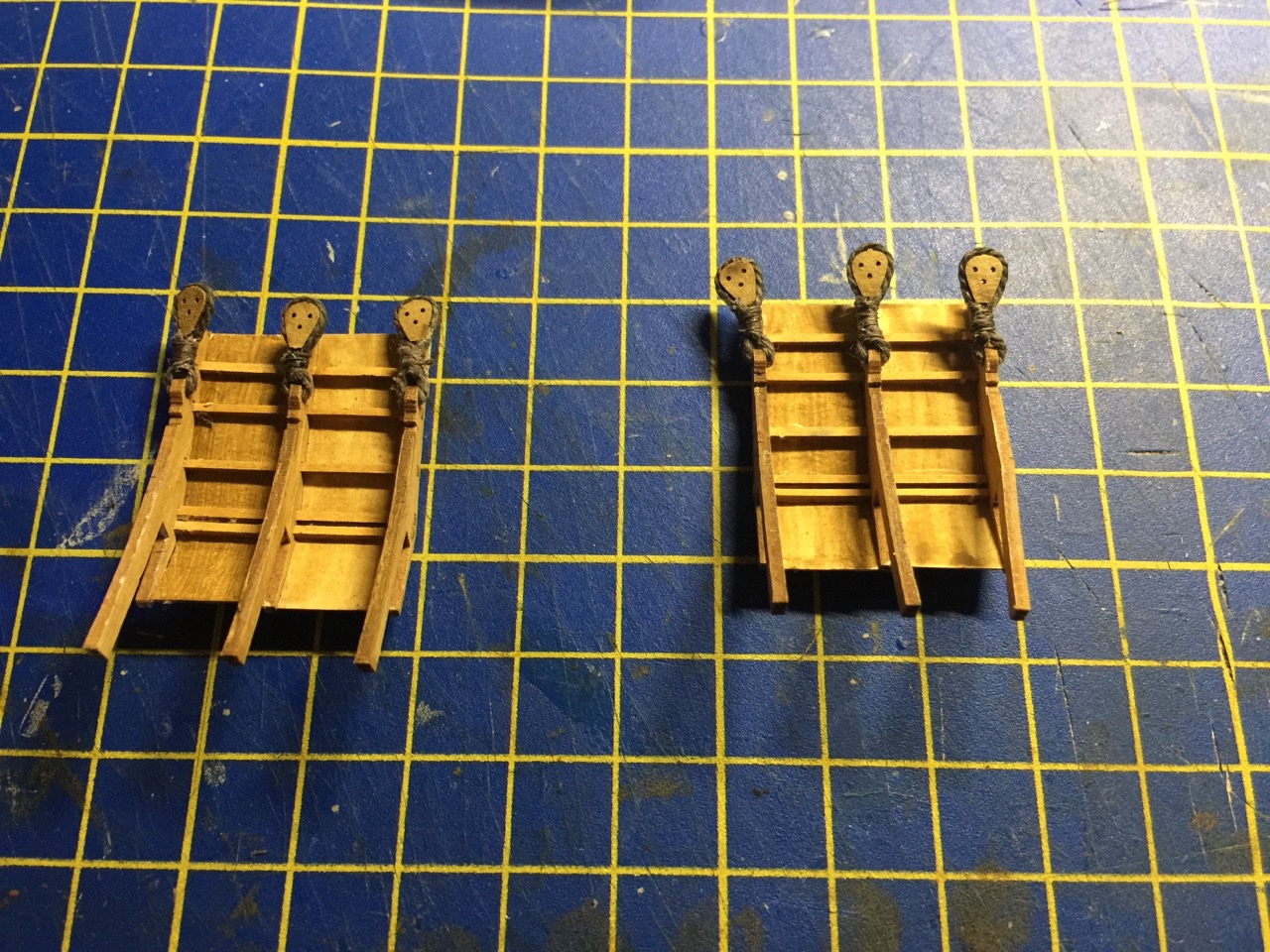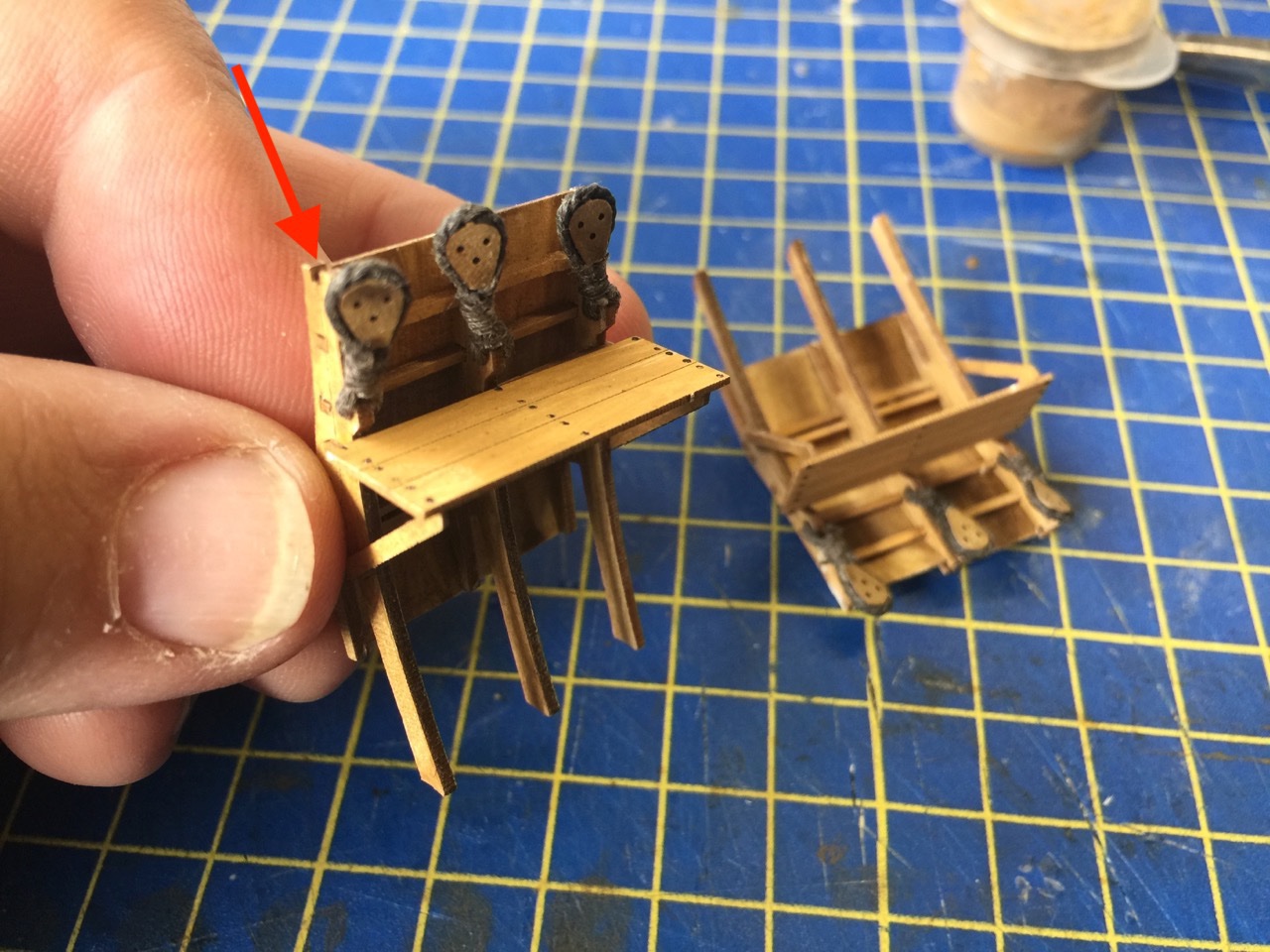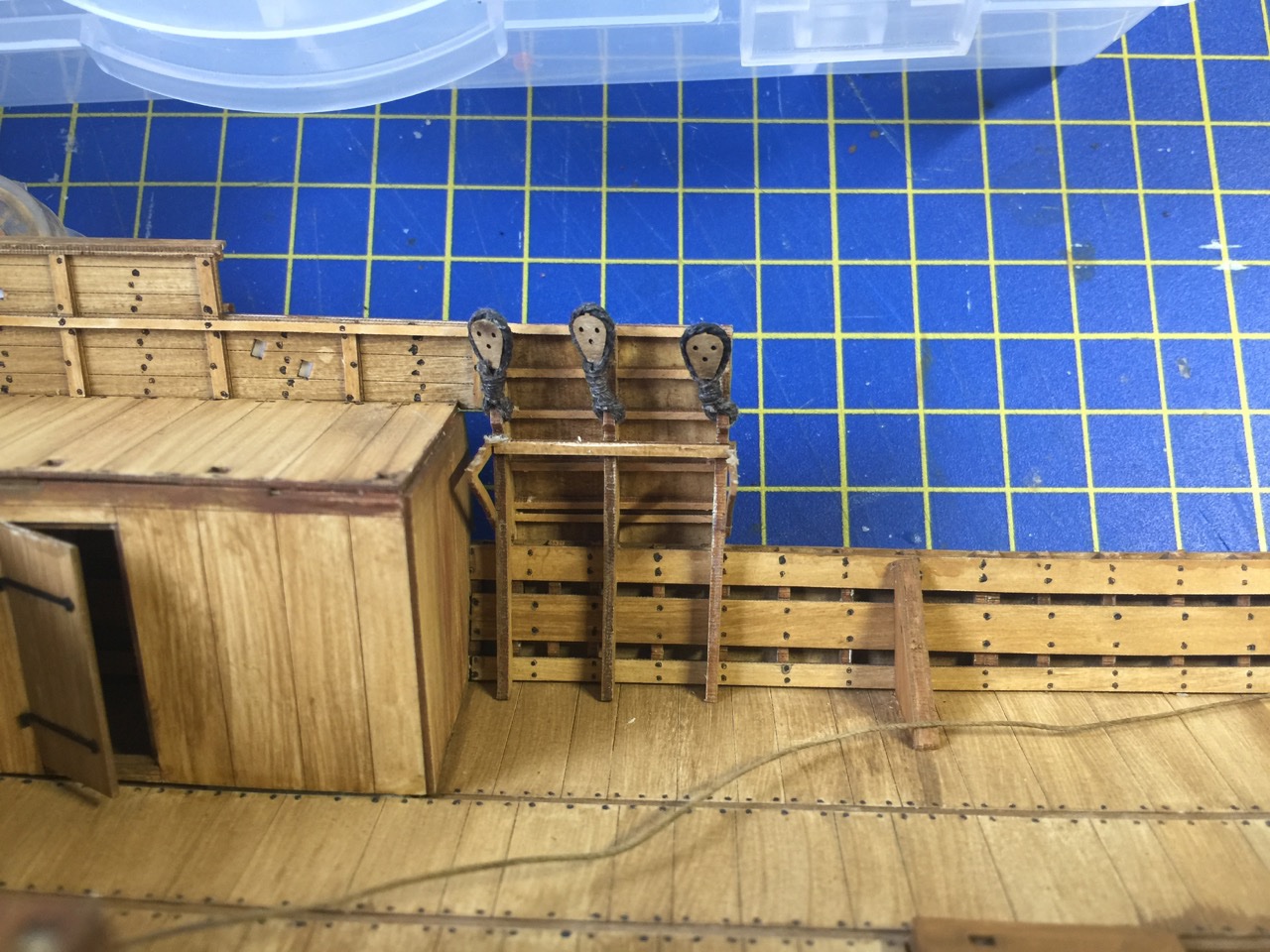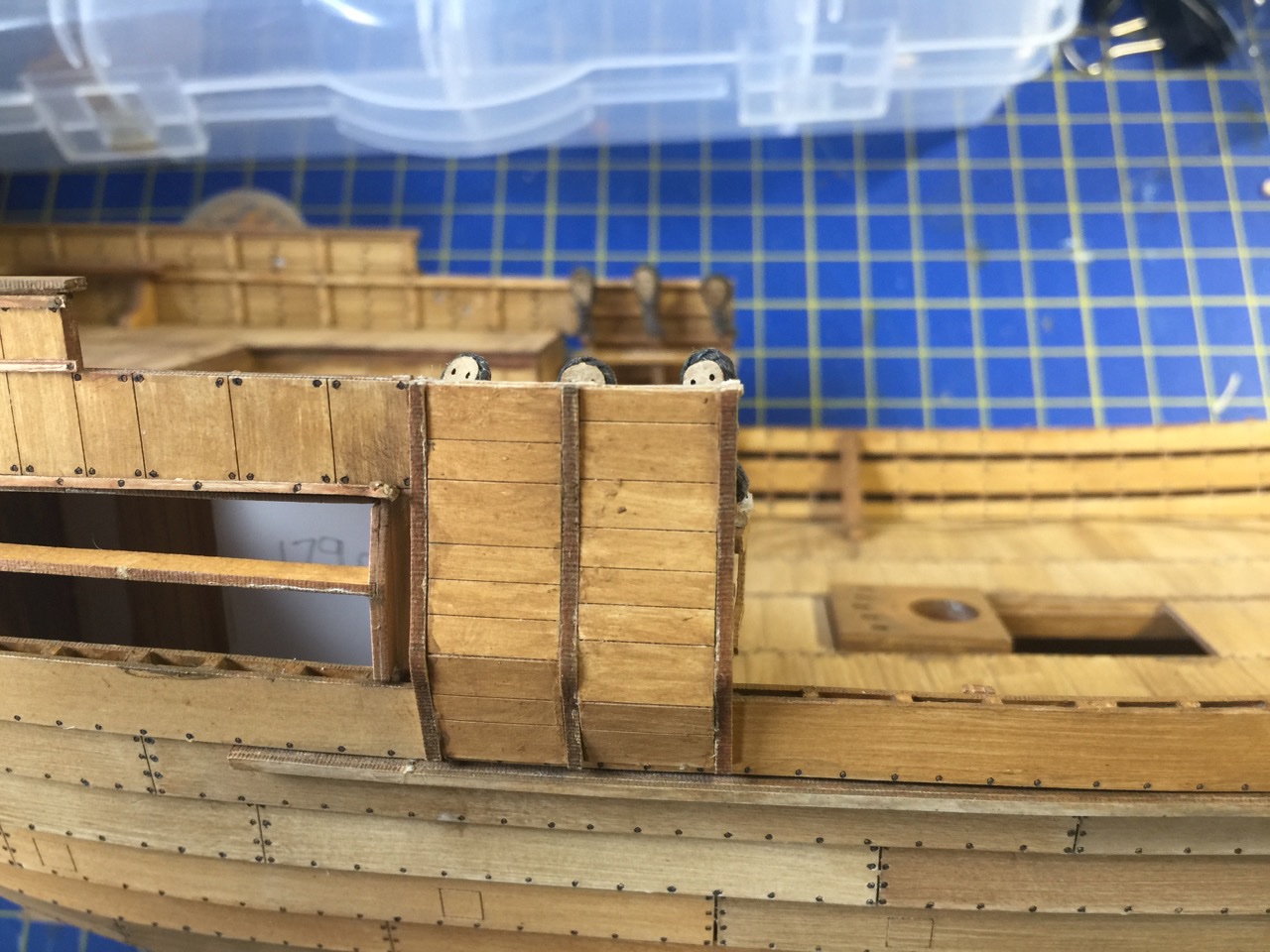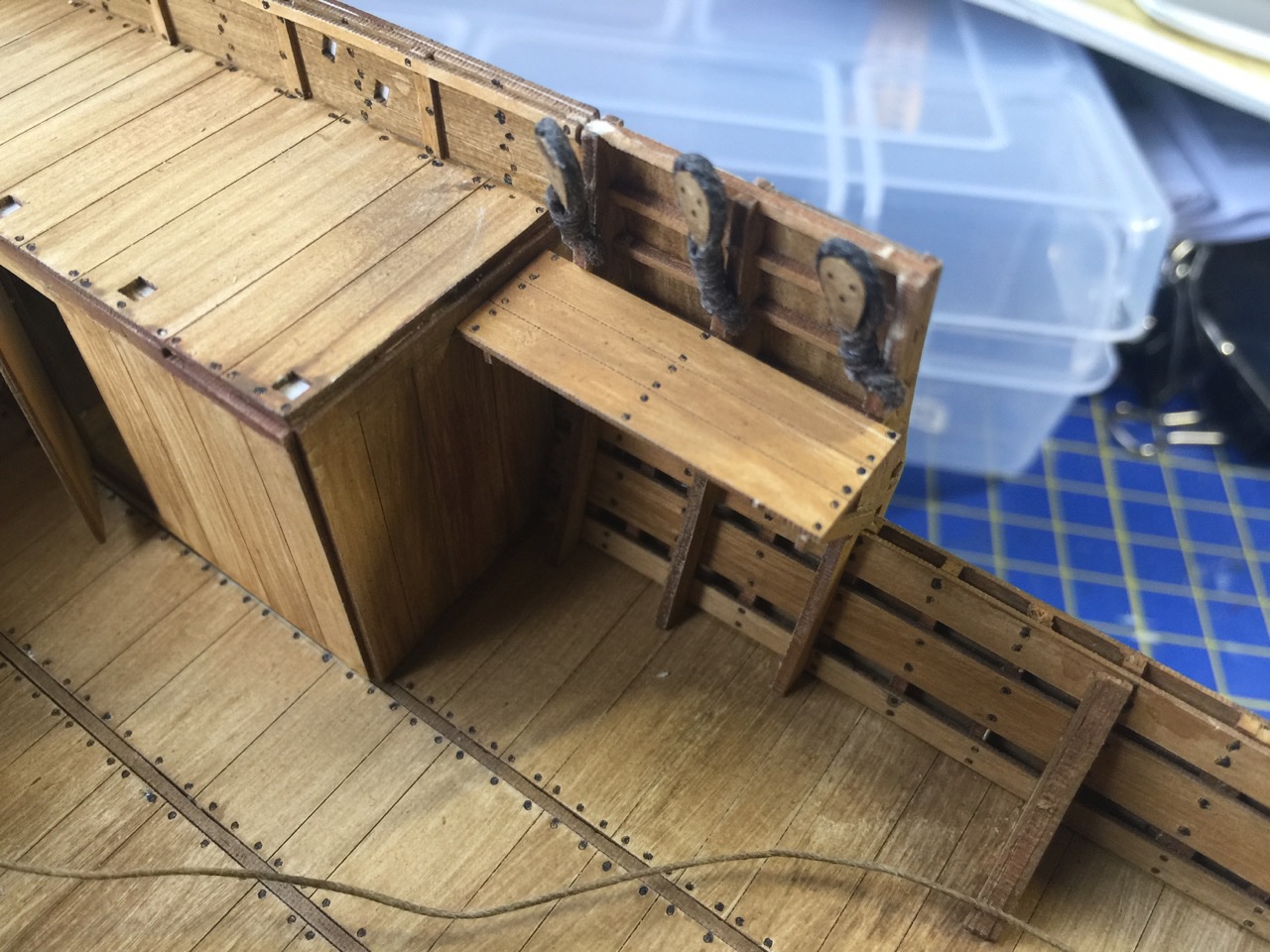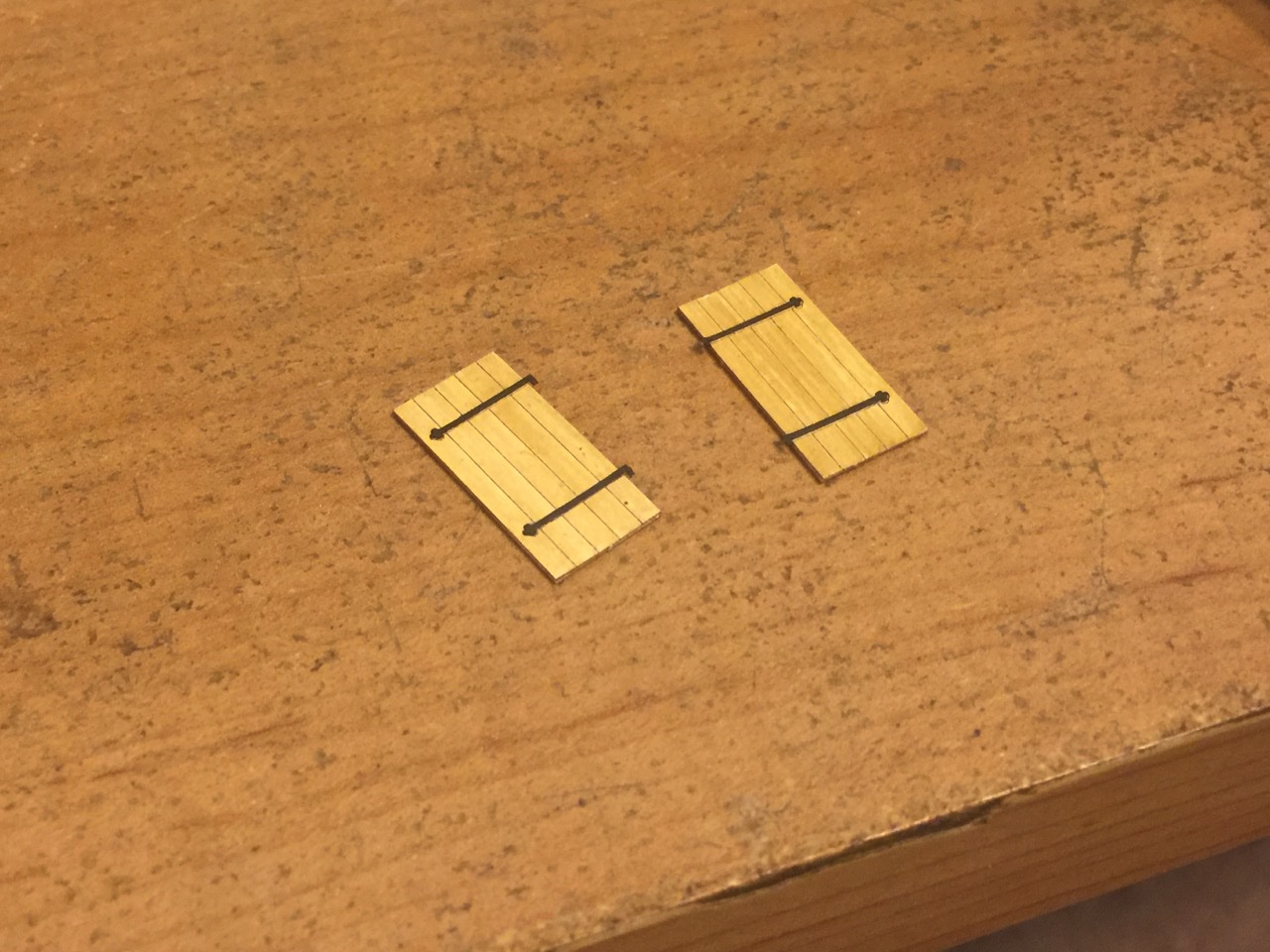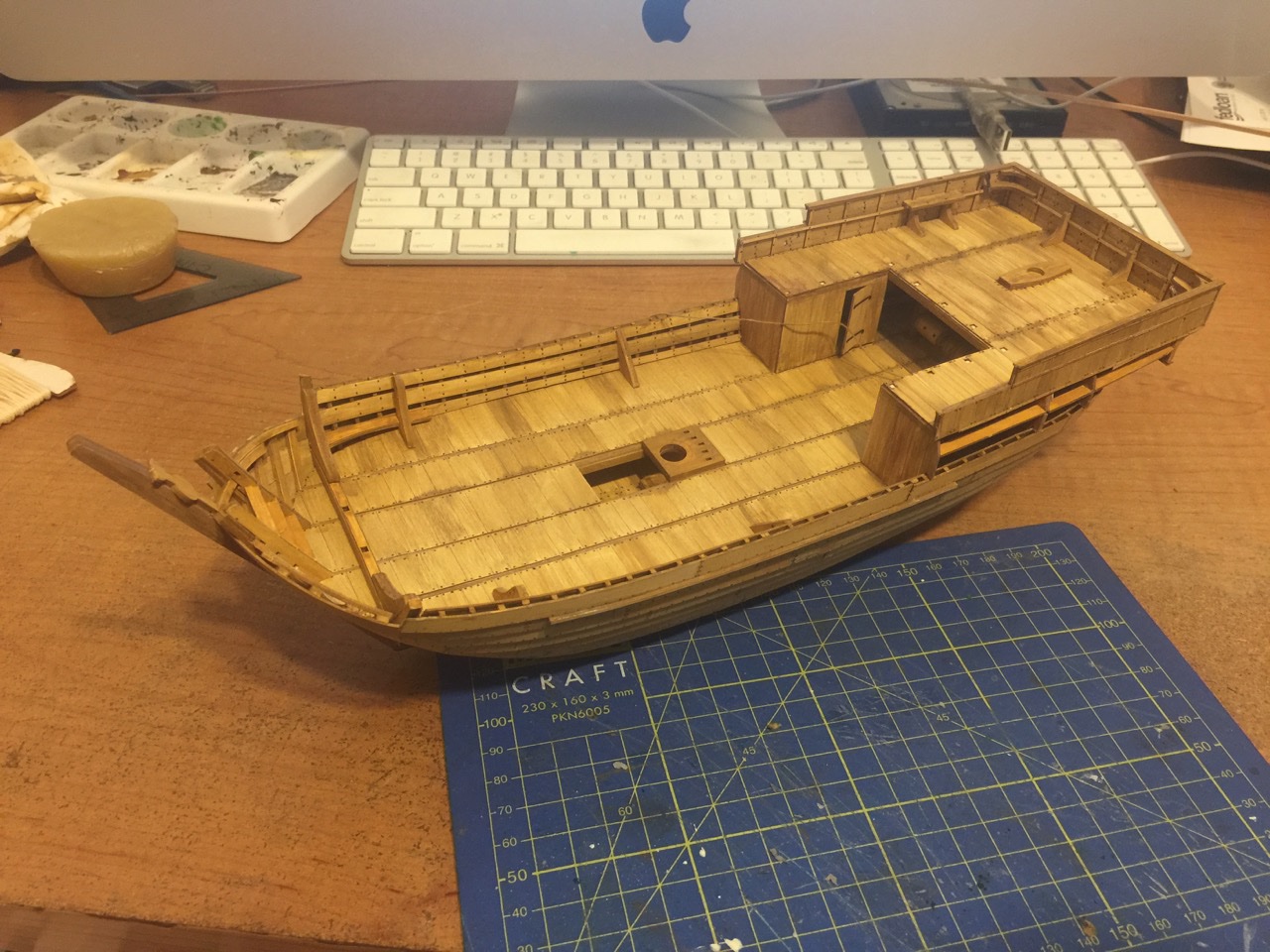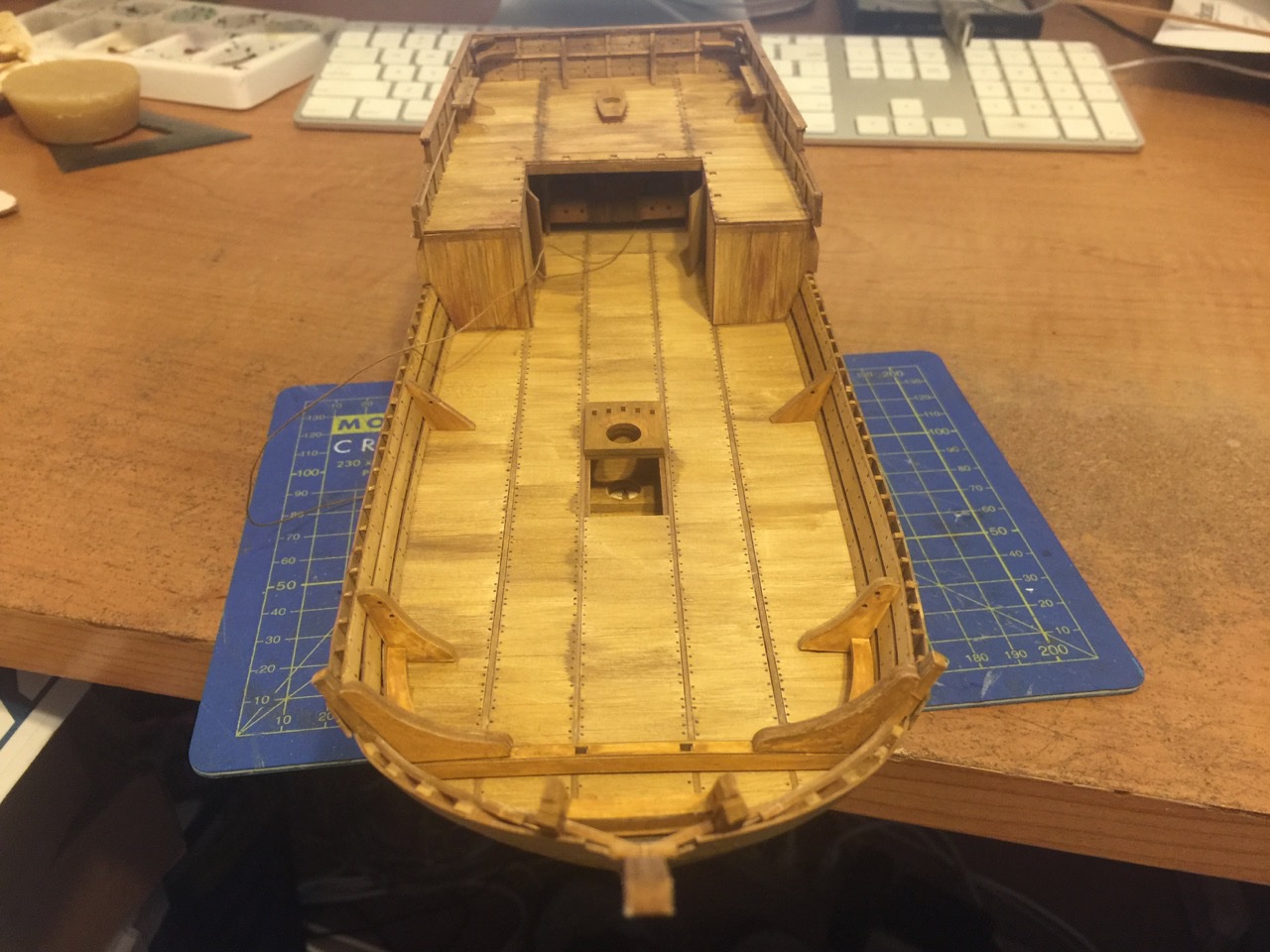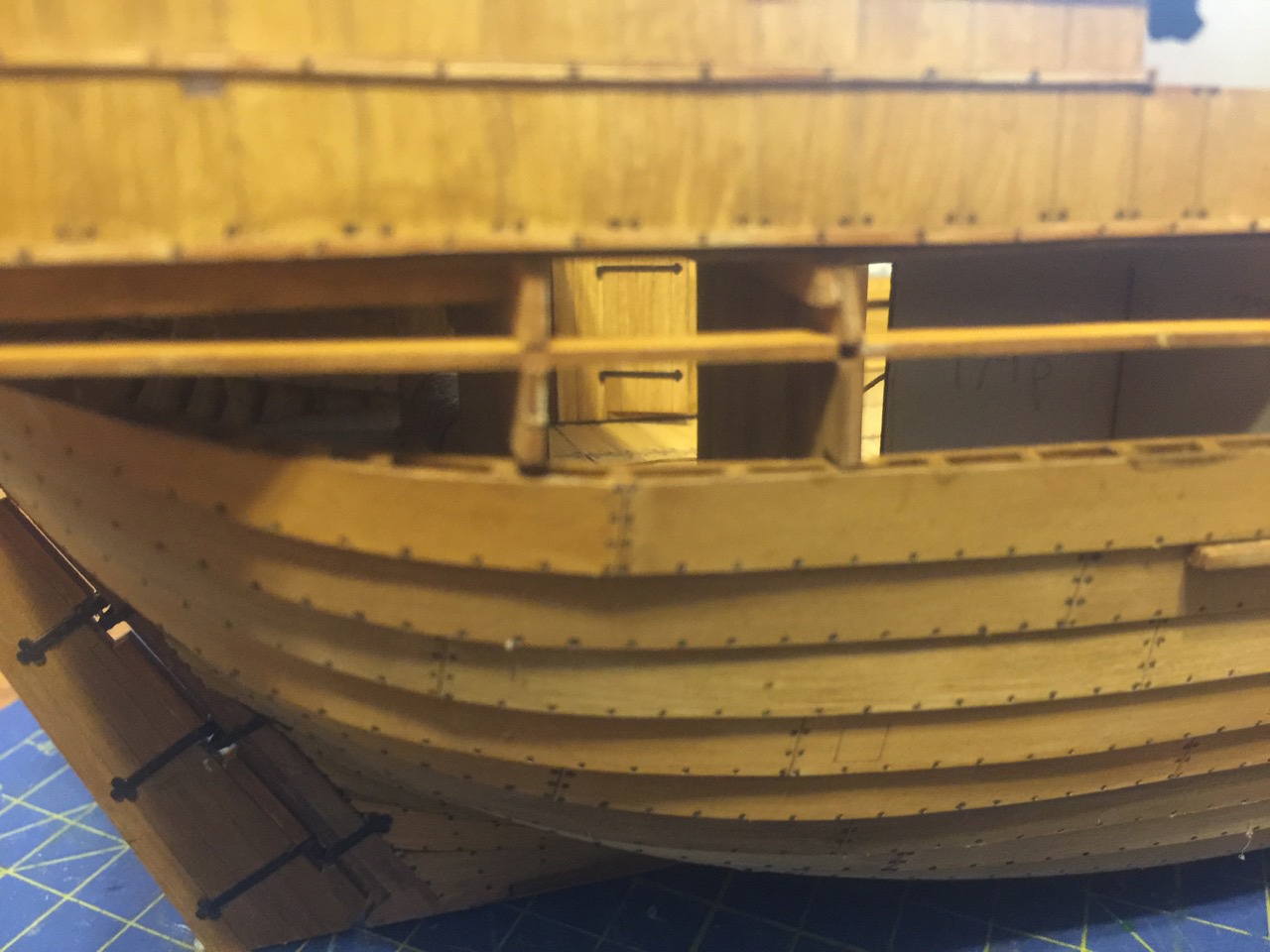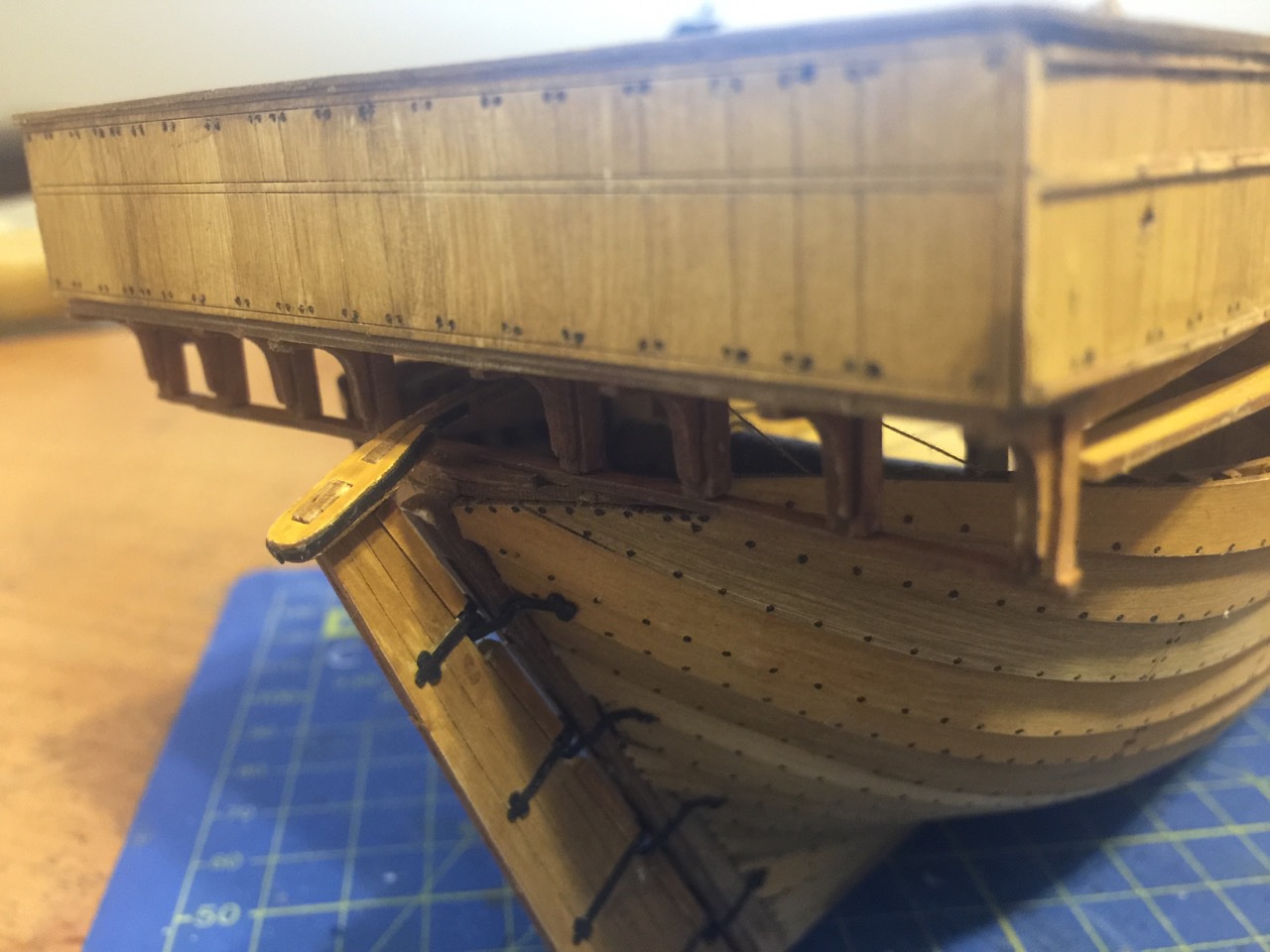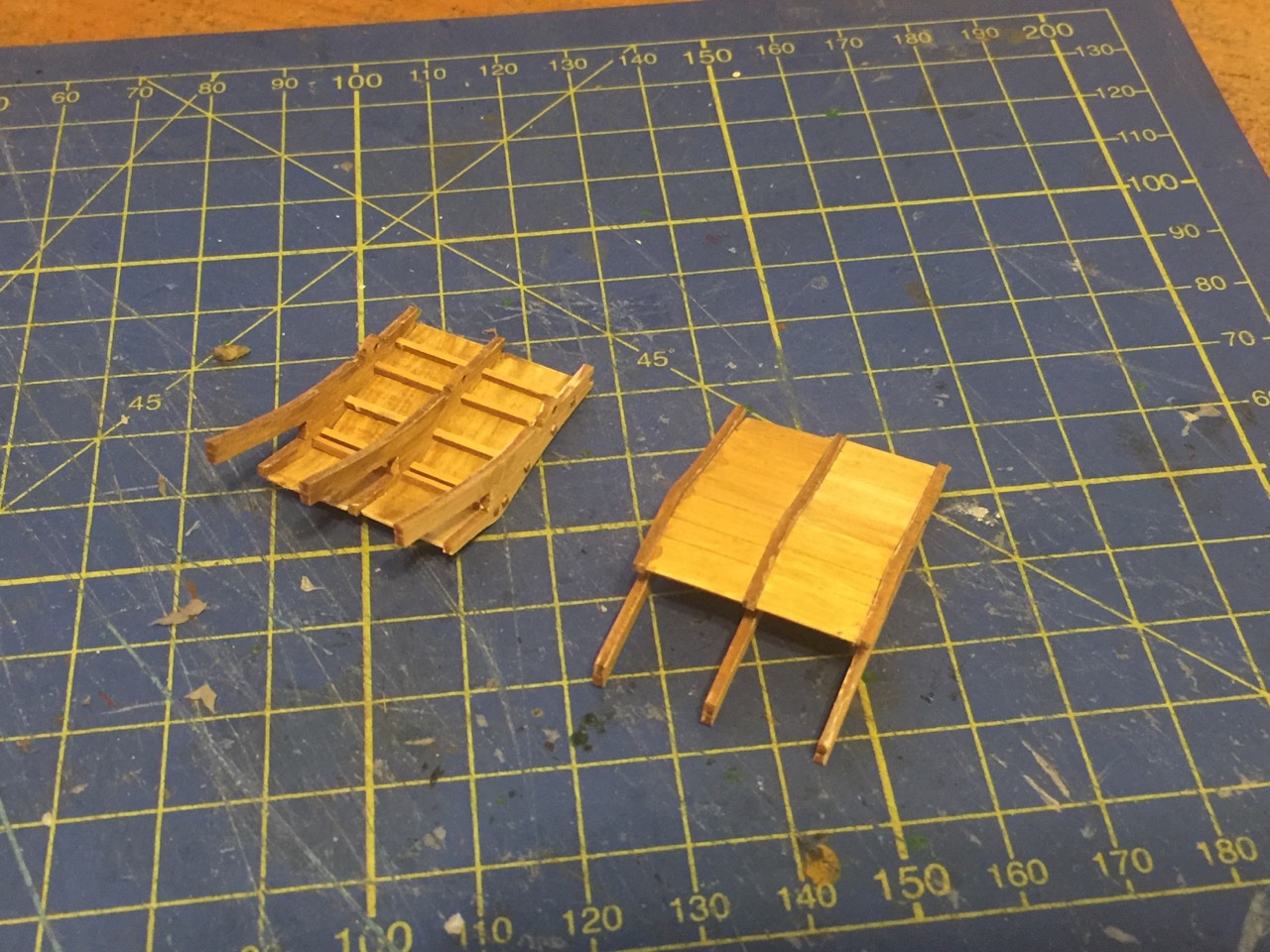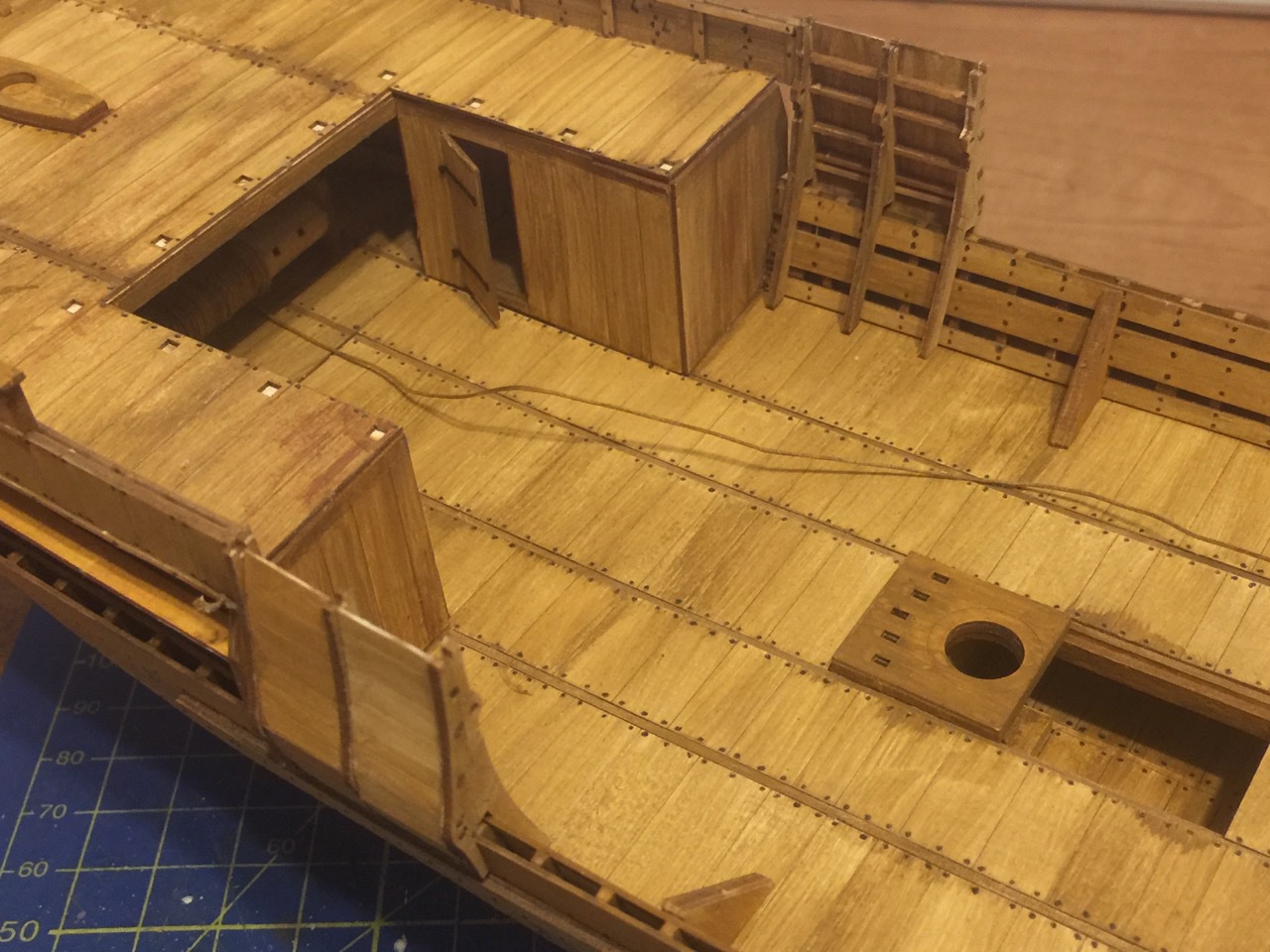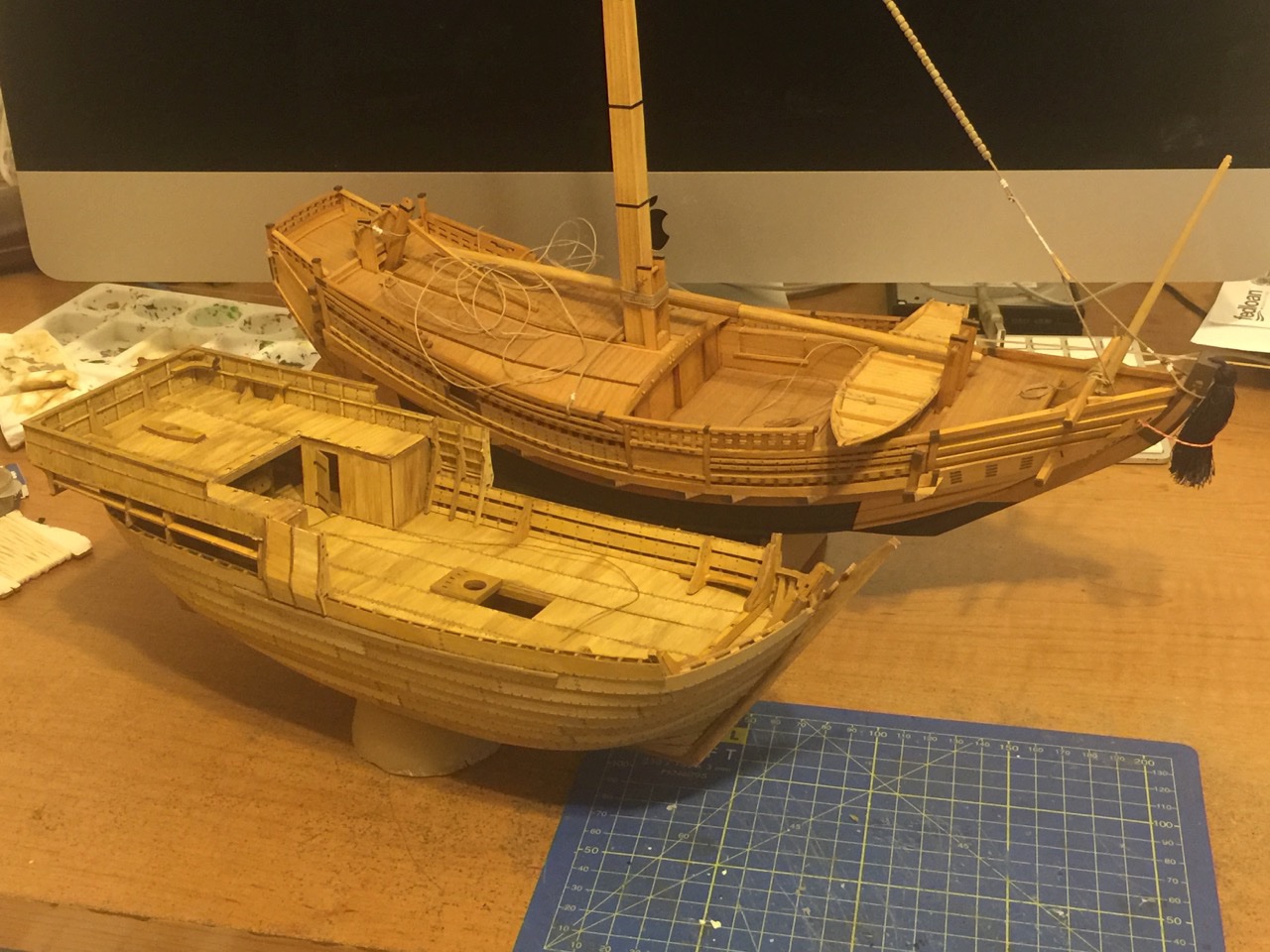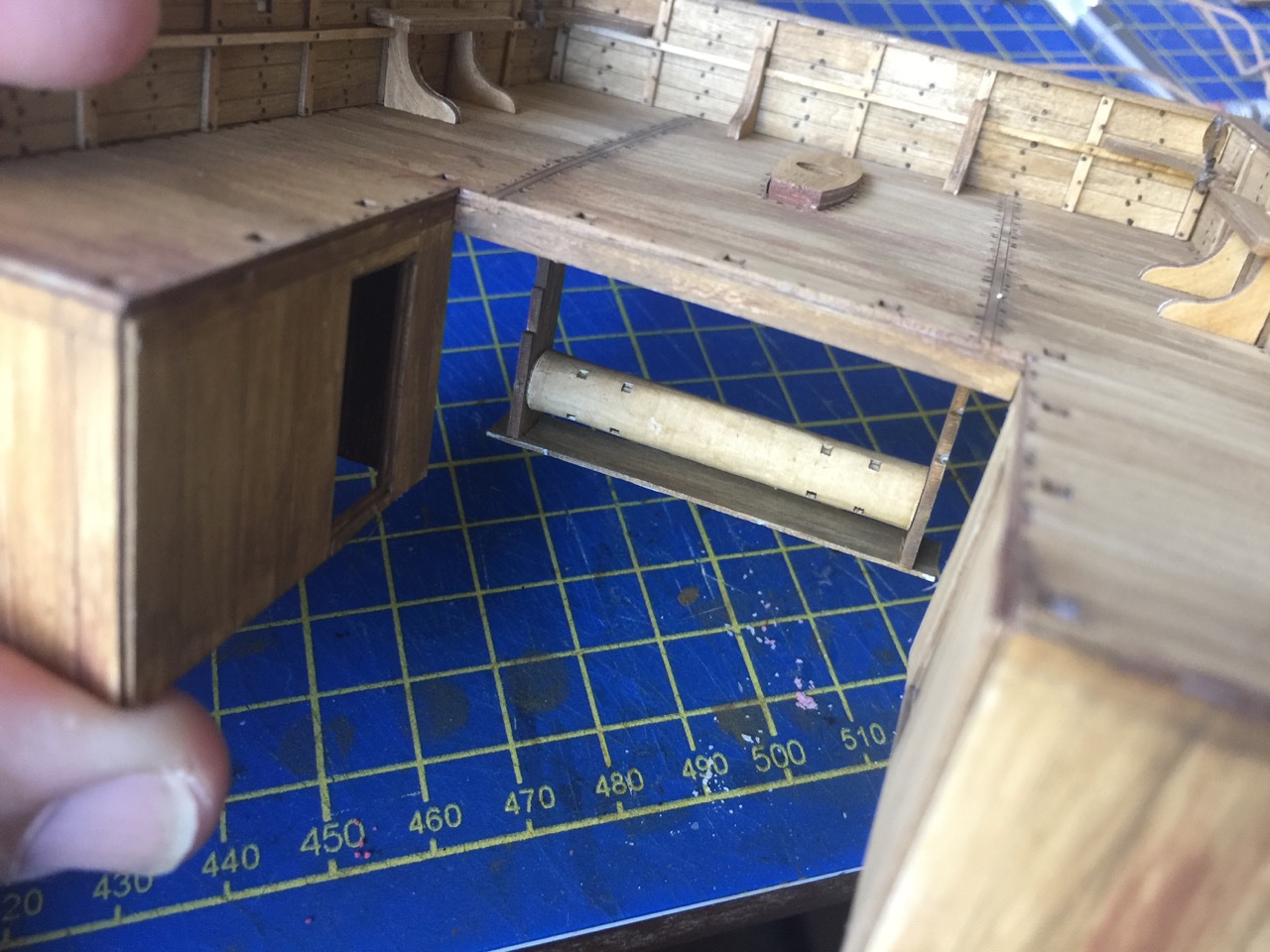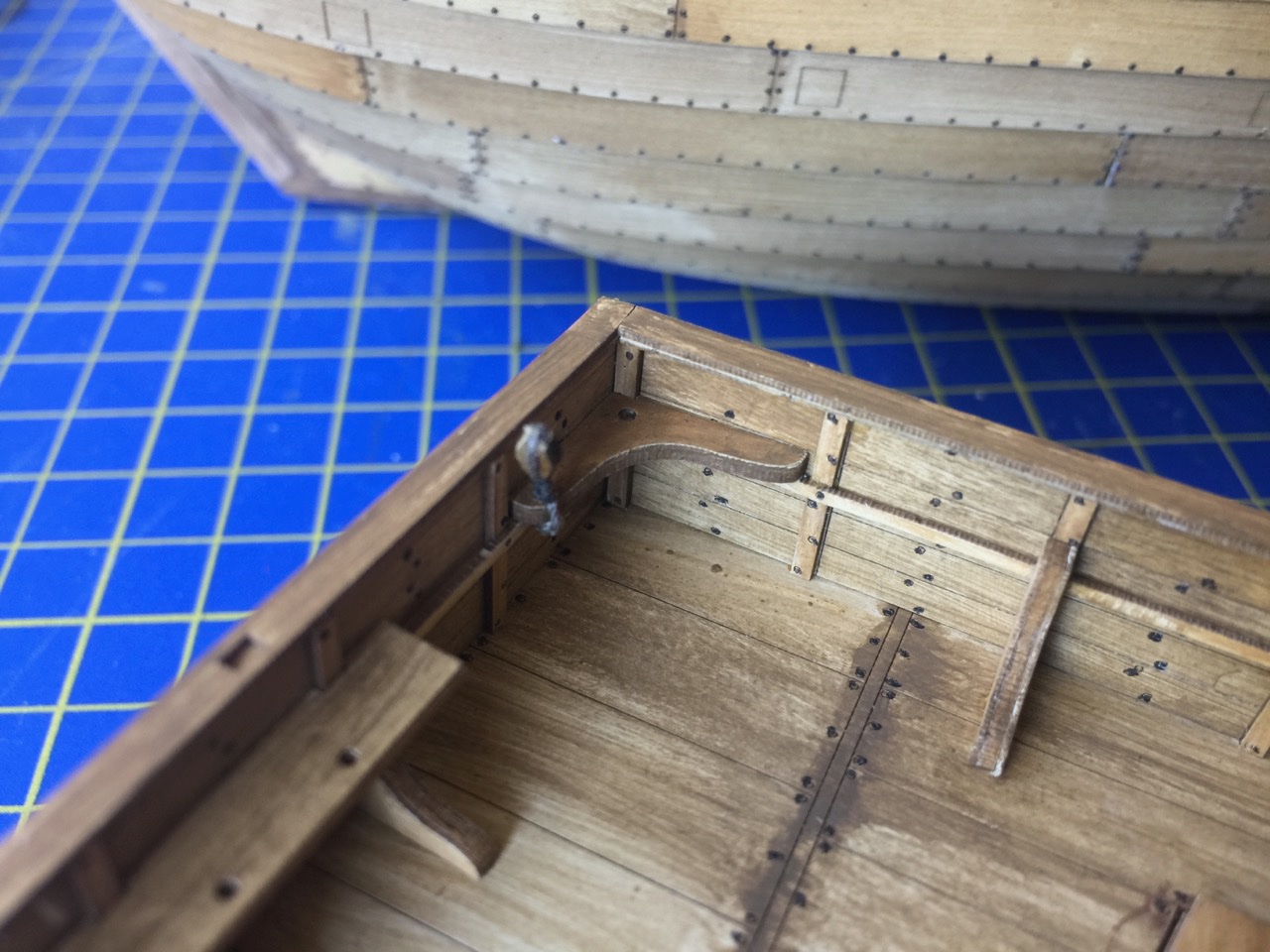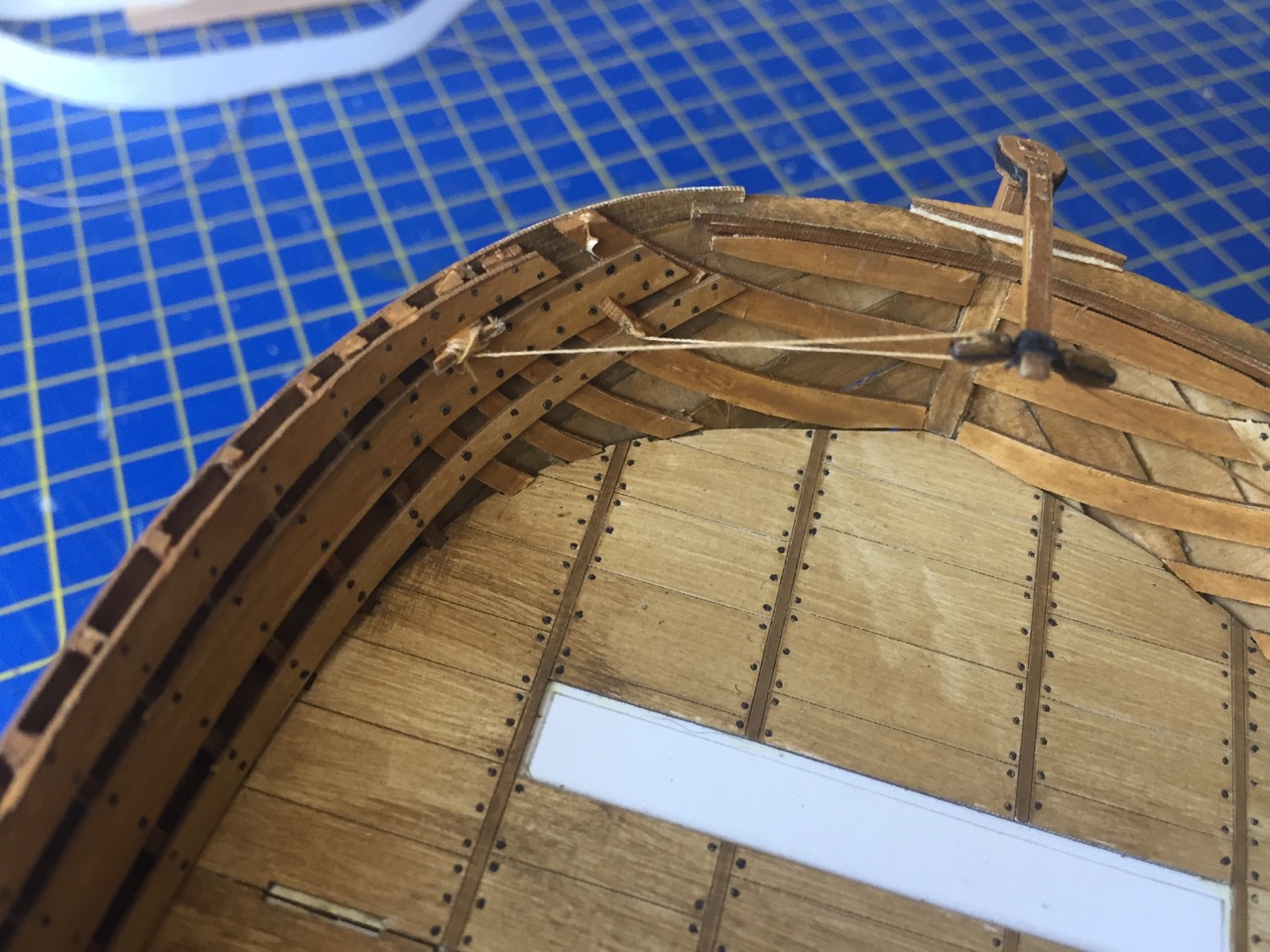-
Posts
1,880 -
Joined
-
Last visited
Content Type
Profiles
Forums
Gallery
Events
Everything posted by catopower
-
Hi Chuck, Well, that's the whole thing. I didn't install the hatch coaming because I had somehow convinced myself that I lost the parts. So, I just pressed on, not to be held back by it, figuring the lost hatch coaming might turn up. Then, it sort of did, right in the parts sheets. I wonder if there might be leprechauns or gremlins messing with my mind? 🤔
- 175 replies
-
- hanse kogge
- shipyard
-
(and 1 more)
Tagged with:
-
After looking in on Chuck Seiler's Wütender Hund builds in card and wood, I'm inspired to get my own cog project completed. But, I had one of those bewildering moments today regarding this project that's making me question my sanity... You might have noticed that there is still a big opening in the center of the deck. Way back in the build, around the time the deck was laid, there was supposed to be a coaming put in place around this opening, just forward of the mast. Now, I skipped this step for a long time because I was sure I made the coaming and misplaced it. I finally figured I must have accidentally put it into a stack of things to throw out. 🤨 For the longest time, I had resigned myself to the idea that I'd have to make a new coaming from scratch. So, today, I was back to working on the model, which is pretty close to completion, so the number of parts remaining on the sheets is dwindling. Then, I noticed some parts on the sheets that seemed curious. I looked for them in the instructions and, lo and behold, here were the parts for the hatch coaming! It seems that I never actually did construct it. My recollection was completely wrong. I can't imagine how I could have ever thought I'd lost something I never built. Apparently, I'm losing my mind! Well, I finally put the parts together, and now have a completed hatch coaming on deck. I don't think I've recovered my sanity, and I may not any time soon, but at least my model is one step closer to completion.
- 175 replies
-
- hanse kogge
- shipyard
-
(and 1 more)
Tagged with:
-

Need help from a model maker in California !
catopower replied to Ekis's topic in Wood ship model kits
Hello Ekis, I got your PM with all the info. But, If there is someone here who lives in the Santa Barbara area, that's probably best. If not, I'll see if there is something I can do to help! -

Need help from a model maker in California !
catopower replied to Ekis's topic in Wood ship model kits
Hello Ekis, Sorry to hear about the model damage. That's very saddening. It's difficult to find a way to ship models safely. I don't think I'm the person to help you out, I live up in the San Francisco Bay Area. But, my elderly mother lives in the northern part of Santa Barbara county, and I do have to travel back and forth a bit as I'm in the process of selling the family house. If you don't get any good responses, send me a PM. I also have modeler contacts in Ventura and San Luis Obispo areas, which are neighboring counties, an hour away from Santa Barbara, and maybe they can help find someone for you. -
Hi Chuck! I haven't peeked in on either your Cardy Dog or Woody Dog builds in a while. Woody Dog looks really good with the staining you did. It's also nice in that it seems to bring out those laser engraved nail heads. I've been busy with various things, but I will get back to finishing my Bremen Cog shortly. Your build is giving me some inspiration!
- 130 replies
-
- wütender hund
- hanseatic
-
(and 2 more)
Tagged with:
-

What were your first tools as a child?
catopower replied to FlyingFish's topic in Modeling tools and Workshop Equipment
My first ever tool set that I have memory of was a little wooden play bench that looked something like this, but smaller! After that, I don't really think I had much in the way of tools that I can recall. I was building plastic model kits, in not very sophisticated fashion. I probably just twisted parts off the sprues. Didn't use a knife blade until my dad gave me a balsa airplane model, then I needed one. I guess I did have a kids carpentry tool set that had hammer, pliers, hand drill, screw drivers, maybe a hand saw. Still, as a kid, nothing that was any more sophisticated than X-Acto knife, coping saw, razor saw – stuff passed down from my dad. Oh, and I did get his vaccu-form machine, though I had NO IDEA what to do with it... -
HakeZou, I love your Pandemic Flotilla! That's really quite a nice collection of models for one year of work. Very nicely done.
- 79 replies
-
- sergal
- sciabecco francese
-
(and 1 more)
Tagged with:
-

Lateen yards – inside or outside of the shrouds?
catopower replied to catopower's topic in Masting, rigging and sails
Ron, Steven, Christiano, thank you for the replies. Everything posted makes sense. What I'm gathering is that there just may be variations in the lateen rig, and the way it's handled may depend on the specific design. On small boats, as Steven pointed out, one may not bother to shift the yard and said to the other side of the mast. But, when we get to larger vessels, there is a difference between whether we're talking foremast vs mizzen. Or perhaps the criteria really has more to do with whether the mast is vertical or canted forward? Christiano, on the polacre, is your yard then outside of the shrouds on the foremast and inside the shrouds on the mizzen? Also, is there any chance can you tell me what the source is of the information?- 14 replies
-
- lateen rig
- washington galley
-
(and 1 more)
Tagged with:
-
The lateen rig is not a subject that one can find a large amount of information on when it comes to ship modeling. In most cases, I see lateen yards are located inboard of the shrouds. This makes sense to me, though I then am always left to wonder how one tacks or jibs such a rigged vessel. Now, I've been looking at early American gunboats from the War of Independence as well as those of the Jeffersonian era and War of 1812, etc. There are a lot of lateen rigs there. I'm interested in the Galley Washington, for which there is a nice set of plans from the NRG, plus the monograph. However, one thing that's always bothered me about these plans is that they lack much detail when it comes to rigging. Still, the monograph goes as far as saying that the lateen yard goes outboard of the shrouds. Is it true that some lateen rigs are done this way? It seems odd to me in that with sails up, there are no parrals to hold the yard against the mast, so all the force of wind is taken only by the halliard. What's worse is that the halliard is being pulled sideways from the pulley in the mast top, so it would be constantly be chafing there. It would also be very difficult to haul the yard up in the wind, as the pulley would be next to useless. Now, I get that the main focus is a POF build of the hull of the ship and not with the rig. In fact, if you mount sails, the model plans don't seem to make any allowances for the belaying of sail handling lines, such as the brails or sheets (if that's what they're called on the lateen sail). So, I'm hoping someone can shed some light for me on the lateen rig. Or maybe just on the Galley Washington plans?
- 14 replies
-
- lateen rig
- washington galley
-
(and 1 more)
Tagged with:
-

Proud owner of a Dremmel drill stand
catopower replied to DaveBaxt's topic in Modeling tools and Workshop Equipment
Also, not everyone is blessed with the space to keep and operate bench tools. The Dremels are very versatile and don't take up lots of space. The Vanda-Lay products mentioned earlier are ideal for those with a small workspace. I used to use the AcraMill Plus with a Dremel as a drill, mill, mini table saw, and more. But, yes, if you have the space a small bench-top drill press is easier for a lot of things. Plus, you don't have to spend the time reconfiguring it, like you do with Dremel attachments. -

kit review Sir Winston Churchill - Woody Joe
catopower replied to catopower's topic in REVIEWS: Model kits
Hi Welsh John, that's is really helpful. I'll have to look at the booms more closely, but your description makes sense. Thank you for the info! Clare -
I think it's likely that it is Butapren, a kind of super strong rubber cement. I've seen it sold on a Polish paper modeler shop site that has some connection to Shipyard. It's commonly sold in tube form, but I think it can be purchased by the can. But, I've only seen it with Polish label, so you'd probably have to find some local equivalent. ]
-
I agree with Chris, it's the Half Moon or Halve Maen. But, only the Corel kit has 8 gun ports. Most other kits, particularly the more recent ones, and the replicas show the ship pierced for 4 guns, 2 on each side. Just like this model.
-
Hi Sam, I was interested in the N.S. del Pilar kit, but I initially got turned off because of the oddness of the poop deck in the kit. The edge of the upper-most deck is oddly exposed, extending out past the bulwarks. This didn't seem right to me. But, hen, I ran across some plans of the ship and saw photos of older models of the ship, and they all show this rather unusual feature. Readin a little about her history, and about how she was rebuilt in 1750, I'm guessing that the poop deck might have been extended to increase the number of cabins or cabin space on the quarterdeck below. I any case, I now find her a very interesting ship, and am enjoying following your build.
-
It's interesting that you received it in six boxes. They have the kit in a single box at Ages of Sail. You somehow received the kit from their supply of "Packs" or part kits, but I think the instructions are the same as the ones in the full kit. This is the only kit I'm aware of where OcCre actually broke down the instructions into six stages to match the part kits. I have the Montañes as a part kit and you just build until you don't have enough pieces to go on, which now that I think about it, is going to be pretty weird. Your NS del Pilar is looking great!
-
Finally got around to mounting the deadeyes to those hull structures that I have no name for. I have to admit that I've been dragging my feet on this step, as "rigging" has kind of fallen out of favor with me. Not good for a modeler of sailing ship! Probably more of a phase. I tend to get into whatever type of work I happen to be doing and don't take well to shifting gears these days. And, I guess I particularly like hull construction, deck planking, and probably research most of all. But, it was time to get back to the Cog after a general break from most everything fun these past couple months. So, deadeyes now in place... As I was working with these, I realized there were notches at the top of these structures (see arrow in the photo below)... was something missing? I looked at the instructions, which didn't show me to add stringers here, like the others below, but in a latter photo in the instructions, the pieces magically appeared! I managed to add those pieces, and of course the little deck and the supports you see above. Then, looking forward, I noticed how these assemblies were fit into place, and it suddenly became apparently, that I had no idea if these little decks would fit into place correctly. Looking closely at the instruction photos, it looked like I might have them wrong. I ended cutting these little decks off, deciding it was much smarter to mount them AFTER the assemblies were fixed in place. NOW, it's safe to add those decks so that they fit right up against that deck cabin bulkhead. Well, anyway, it's progress!
- 175 replies
-
- hanse kogge
- shipyard
-
(and 1 more)
Tagged with:
-
Hi Christos, your build is coming along beautifully! The Royal Caroline kit has alway been one of those builds on my wish list. As for your paint or no paint question, first off, I have to agree with the comments that it's totally up to you. That said, I will add the comment that whatever you do, some people will always think it would look better the "other way". When I get around to building this kit, I personally really like the look of the model in the box art, which shows a white bottom. However, the wood showing on that model is very light in color. My one concern is that if the wood is too dark, then to my eye the contrast might be too stark. Of course, were I actually building the model, if the planking looked too fantastic, I might opt for no paint, just because I might hate covering it up. How's that for a not-really-an-answer answer? 😀
- 124 replies
-
- panart
- royal caroline
-
(and 1 more)
Tagged with:
-
This kit is indeed plank-on-bulkhead. And, while some listings say it's a brand new kit, I can tell you that it's been out for years. But, I don't know how many. Never built it, but I have opened up the box and looked through the plans and such. Very nice looking kit. This is one of those kits I've eyed for a long time. I like Corel kits in general and this one is a large scale, so it would make it easy to detail. Ages of Sail has it in stock, which is where I've seen it.
-
Hi Peter, Looks to me like OcCre simply screwed up in the amount of 0.5mm limewood strips they gave you. According to your parts list, there are supposed to be 7 strips. I actually have this kit as well. It has one bundle with all the wood strips in it. I have 11 of those .5mm limewood strips. So, I got my 7, plus 4 extras. You got 7, plus 28 extras. Oops! Better to get too many than too few... 😀 Clare
-
I am glad to see your progress on the model. It is a lot of work planing such a large hull, isn't it? The large OcCre models are particularly challenging, as they feature only a single layer of planking of the hull. So, getting a nice shape and dealing with gaps is much more difficult to do. Also, the planking material that OcCre provides for the lower part of the hull, is it sapelli? That is harder to bend than the Lime wood they usually provide for the first layer of planking of their smaller kits. Nice work! Clare
-
If it's any help, Pear wood takes dyes very well. I've found it works better for me than other woods. I used Fiebing's black leather dye. Soaks it right up and it is blacker than black. You do have to rub it down after it's dry to take off any excess, and that leaves it with a slight, rather nice sheen. Pear wood also works VERY nicely.
-
So, more progress as I've permanently mounted the stern castle structure. This wasn't easy, as there are a number of contact points, and there is some flex in the structure. I had to reach underneath with long, narrow piece of wood to put pressure on the windlass assembly in order to get it to fit into place. I think Shipyard should have just made the vertical supports extra long with slots in the deck to fit into. That would allowed for some variance in the way the whole stern castle structure fits into place. As it was, I had to apply a bit of extra pressure to hold everything down into place until the glue set. A little bit of paint afterwards hides any issues pretty well. First I had to make and mount the door, as you can see below. But, once those were in place, it was time to put it all together. So, now the stern castle is in place and I'm now working on these structures that hold the deadeyes. On later ships, the deadeyes were outboard of the hull and mounted on chain wales, or channels. On the cog, they are mounted inboard of the hull and mounted on inboard frameworks – kind of "ingrown" channels. Below, you can see these structures temporarily mounted in place. I still have to strop and attach the deadeyes before these are permanently mounted. But, it gives you an idea of how it will all look in the end. Though, I suppose the cover art does that just as well. I guess I just wanted to see my model looking more complete! In the last photos, the cog model is next to another 1/72-scale model, but a wooden kit of a Japanese coastal transport from a Japanese manufacturer called Woody Joe. That model is very close to completion as well. I basically just need to add the sail and wrap up the rigging. While it's a wooden kit, it's probably a good subject for a card version. Anyway, the Japanese ship is specifically a type of coastal transport called a Kitamaebune (key-tah-mah-eh-boo-nay). This is specifically one from the early 19th century. But, similar ships have been built since the early 1600s. If you're interested, I have another build log for it here: Clare
- 175 replies
-
- hanse kogge
- shipyard
-
(and 1 more)
Tagged with:
-
Louie, the one way around the issue is that the tiller ropes are almost impossible to see back there. They are behind that windlass. So, cutting those ropes would have allowed the deck to be fit into place. Not a great solution, but probably better than destroying the tiller or rudder head. Mark, well, it actually does kind of look like a workbench. Nicer than my actual work space! Clare
- 175 replies
-
- hanse kogge
- shipyard
-
(and 1 more)
Tagged with:
-
Thanks for the comments everyone. As I get further along and see fewer parts remaining on the laser-cut sheets, it's apparent that the end is still a little ways off, but it is in sight. There will be some rigging to do, but it's minimal on a ship with only one sail. Over the weekend, I discovered that once the tiller ropes are rigged, there is no way to fit the stern castle structure to the deck, except by removing the tiller from the end of the rudder. I didn't see anything in the instructions that tell you not the glue the tiller into place. But, it was such a snug fit, that I never glued it. So, I got lucky. Only later, do the instructions show the tiller, free of the rudder, allowing you to fit the stern castle into place. Once in place, the tiller can be re-attached to the rudder. I've had to start dealing with rigging line. The stuff that's included in the kit is all white. So, it's needs to be dyed or stained. Fortunately, I just happen to have some very old bottles of Floquil rigging stain (remember that stuff?) that I wanted to try out again. These are very old bottles I've had in the garage for some 20+ years, but found that they mix up well, even after sitting for so long. It's the last of my supply, but this is a small rigging project, so I thought I'd try it out again. I prepared some line for the tiller ropes and finishing rigging it. I also prepared some line to secure a few blocks into place on the model. Pretty soon, I'll be ready to fix the stern castle into place on the model. Below is the last item that I needed to add to the stern castle before mounting it. This is the windlass used for raising the sail. One more thing I'll need to do is to add wrap a length of rigging line around it for the main halyard. Clare
- 175 replies
-
- hanse kogge
- shipyard
-
(and 1 more)
Tagged with:
About us
Modelshipworld - Advancing Ship Modeling through Research
SSL Secured
Your security is important for us so this Website is SSL-Secured
NRG Mailing Address
Nautical Research Guild
237 South Lincoln Street
Westmont IL, 60559-1917
Model Ship World ® and the MSW logo are Registered Trademarks, and belong to the Nautical Research Guild (United States Patent and Trademark Office: No. 6,929,264 & No. 6,929,274, registered Dec. 20, 2022)
Helpful Links
About the NRG
If you enjoy building ship models that are historically accurate as well as beautiful, then The Nautical Research Guild (NRG) is just right for you.
The Guild is a non-profit educational organization whose mission is to “Advance Ship Modeling Through Research”. We provide support to our members in their efforts to raise the quality of their model ships.
The Nautical Research Guild has published our world-renowned quarterly magazine, The Nautical Research Journal, since 1955. The pages of the Journal are full of articles by accomplished ship modelers who show you how they create those exquisite details on their models, and by maritime historians who show you the correct details to build. The Journal is available in both print and digital editions. Go to the NRG web site (www.thenrg.org) to download a complimentary digital copy of the Journal. The NRG also publishes plan sets, books and compilations of back issues of the Journal and the former Ships in Scale and Model Ship Builder magazines.

